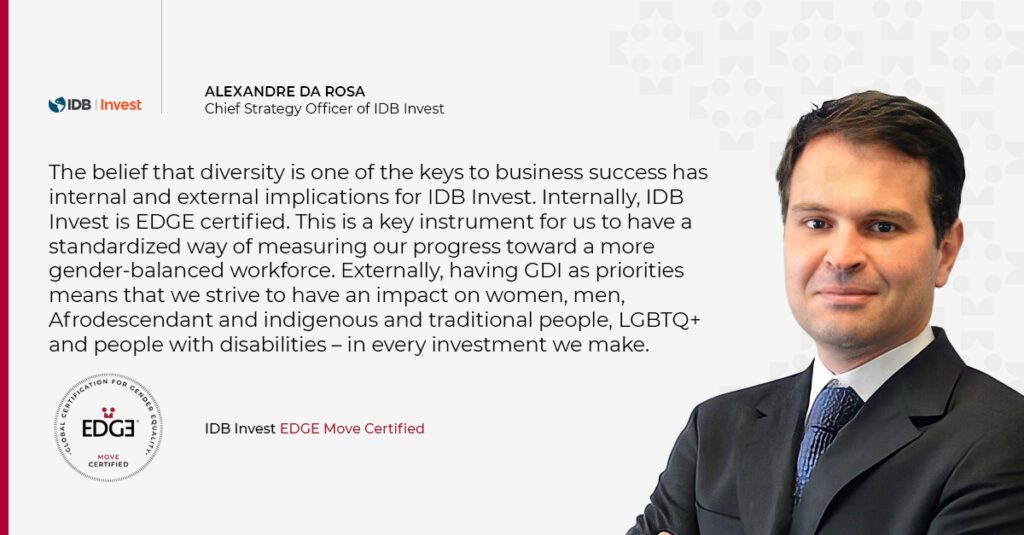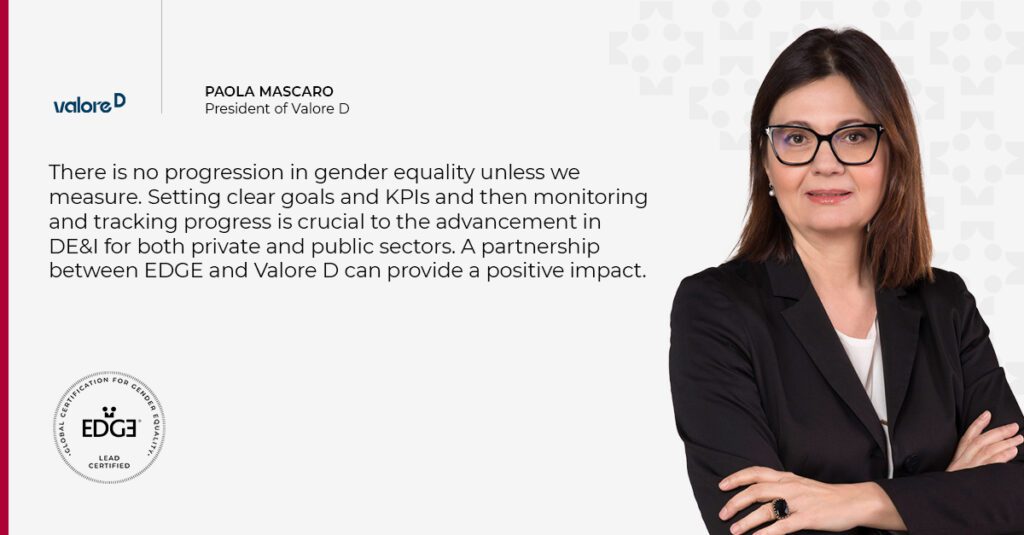
Author: Aniela Unguresan
Founder, EDGE Certified Foundation
At the end of April, the Council of the EU adopted a new pay transparency directive, with clear rules on pay gap reporting and remediation that talk about unexplained gender pay gap and intersectionality – elements already central to the EDGE Certification methodology and standards. This is how the era of ‘brutal transparency’ around pay equity begins.
While equal pay for equal work or work of equal value is nothing new in the EU, the implementation and enforcement of this principle has been an ongoing battle due to a lack of transparency. This directive addresses these challenges by talking about the need to be transparent in reporting and the determination to take clear remedial actions if the unexplained gender pay gap exceeds plus or minus 5%.
The EU directive also talks about fines for employers that don’t follow the rules. This is not something to be taken lightly considering that GDPR, a directive with similar penalties for non-compliance, just fined Meta €1.2b for breaching its rules.
Crucially, the new directive talks about intersectionality, the combination of multiple aspects of diversity, which has been included in the regulation for the first time, and it has a particular emphasis on gender and working with a disability status.
What does the new EU directive say?
- Organizations with more than 250 employees must report their gender pay gap annually.
- Organizations with more than 150 employees must report every three years (this will eventually be extended to companies with more than 100 workers).
- Organizations with a pay gap of more than 5% must conduct a joint pay assessment with workers’ representatives.
- Workers who have suffered gender pay discrimination can receive compensation, including full recovery of back pay and related bonuses or payments in kind.
In addition, the burden of proof in pay discrimination cases will now fall on the employer. The organization must prove that they have not violated EU rules on pay transparency – or face “proportionate and dissuasive” penalties.
EU countries have up to three years to adapt their national legislation in response to the rules.
The way in which EU regulations are rolled out by member countries is often misunderstood, so it is important to point out that EU member states cannot change the directive or refuse to follow it. A directive, by definition, is mandatory. They can change the modalities of application only (for example the level of fines or the institution that an organization must report to).
What they can’t change is the requirement to report, to analyse intersectionality or to take action if the unexplained gender pay gap is plus or minus 5%. Change is here.
The need for independent verification is coming
Third-party verification has never been more important – and the EDGE Certification methodology and standards are already completely aligned to the EU regulations.
While this is an EU directive, it will raise the expectations of workers at global organizations. If an enterprise company is taking very clear actions to remediate pay inequities in its European offices, then the talent working in Hong Kong or Brazil, for example, will demand the same treatment, the same level of transparency and the same remedial action.
This directive therefore marks the beginning of a new era for DE&I. People across the world will start talking about the impact of this regulation. And organizations that prioritise universal transparency on pay equity across their company will be at the forefront of this welcome shift.
EDGE Certification
EDGE Certification is an independent third-party verification that gives organizations a universally recognized symbol of their commitment to DE&I.
There are three levels of EDGE Certification to recognise the organization’s DE&I maturity and their commitment, progress and success. EDGEplus Certification can be added at any level to show the organizations pledge to tackle intersectional equity as well as gender equality.
Organizations preparing to become EDGE Certified will undertake a regression analysis of salary and pay to assess unexplained gender pay gaps. This is conducted using standard variables with the option of adding variables specific to the organization.
This methodology already aligns with the EU’s pay transparency directive.
Working towards pay transparency
In past years, the biggest hurdle to pay equity was agreeing on a methodology. In the application of these new EU regulations, however, the methodology becomes clear. The most difficult part is now bridging the gap between total opacity and total transparency when it comes to pay and its various components.
Pay equity analyses are usually conducted behind closed doors, under deep layers of privilege, especially in the United States, but also in some parts in Europe. So, how do we move from here to something that is communicated transparently? How do you equip managers to understand pay equity and what the company is doing towards achieving it? And for employees, how do you equip them with a way to ask for a pay equity review in the same way in which they might ask for their annual leave to be approved?
The answer is clear DE&I goals and constructive, constant communication. Having these conversations internally means employees don’t have to go to the media or a judge to express their dissatisfaction or achieve what’s rightfully theirs – it becomes a normal part of working life.
It is therefore essential to ensure that your employees are aware of your Equal Pay Policy and understand your actions and commitments in this area.
Managing pay transparency
Transparency is a requisite for employees to judge whether they are being treated fairly. This means that being proactive is essential.
To communicate in a meaningful and credible way about your proactive management of pay equity it is essential to gather objective evidence on where you currently stand by conducting a pay equity analysis which can include gender but also other aspects of diversity for which statistical data is available such as ethnic background and origin, sexual orientation, working with a disability, and nationality.
Once you understand your current status, you can create a pay equity narrative, which can be regularly shared with employees. These communications can explain how the organization is proactive in measuring, analyzing and reporting on equal pay data, and how detected cases of any unexplained pay gaps are being systematically remediated.
The EDGE Certification process brings credibility to this communication through the independent verification of the organization’s pay equity analysis.
This is how you start to turn an DE&I aspiration into a deliverable.
How to proactively communicate on pay equity
- Ensure that senior leaders communicate internally and externally on a regular basis about the organization’s commitment to pay equity and how this relates to the overall equality journey.
- Provide training to line managers to help them to make the right pay and/or bonus decisions and enable them to talk confidently to their teams about the rationale and fairness of pay processes and outcomes.
- Provide different opportunities for discussion on the topic so that employees can ask questions and understand the basic concepts and terminology around gender and intersectional pay equity.
- Identify ways to ensure that the information you provide is accessible and easily understood – use plain language, infographics and videos and communication across as many channels as possible.
- Share pay information that is not confidential or related to individuals, such as pay spines and salary bands, with your employees.
- Publish data, externally and internally, on your identified pay gaps and set out your action plan to address these, for example in your Annual Report.
Achieve transparency on pay equity with EDGE Empower
The management of pay equity must be an ongoing business objective, integrated within your organization’s policies, processes and practices and kept under systematic, constant review. Engrained in the EDGE Certification methodology and standards, EDGE Empower helps organizations to achieve this.
It is the complete DE&I software-based solution that enables organizations to bring the same discipline and rigour to DE&I as they would to other business-critical missions and to become eligible for EDGE Certification.
Wherever you are in your DE&I journey, discover how EDGE Empower can help you achieve your DE&I goals. Book a demo, today.
Book a demo
Wherever you are in your DE&I journey, whether at the very beginning or further along, EDGE Empower helps accelerate your progress, and through EDGE Certification visibly prove it – applying the same discipline and rigour that you would to other business-critical missions. Learn more by booking a demo, today.

















